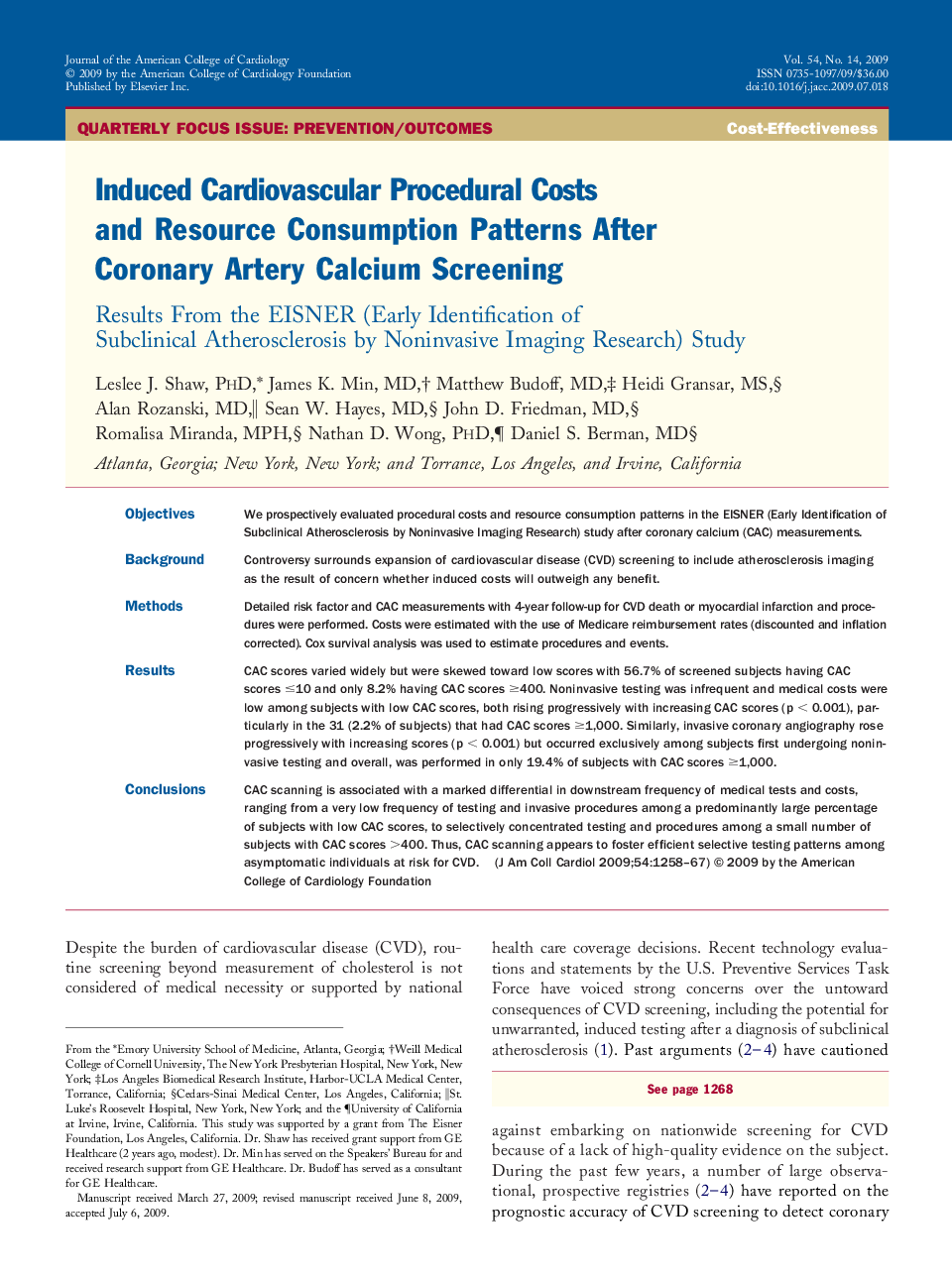| کد مقاله | کد نشریه | سال انتشار | مقاله انگلیسی | نسخه تمام متن |
|---|---|---|---|---|
| 2951673 | 1577349 | 2009 | 10 صفحه PDF | دانلود رایگان |

ObjectivesWe prospectively evaluated procedural costs and resource consumption patterns in the EISNER (Early Identification of Subclinical Atherosclerosis by Noninvasive Imaging Research) study after coronary calcium (CAC) measurements.BackgroundControversy surrounds expansion of cardiovascular disease (CVD) screening to include atherosclerosis imaging as the result of concern whether induced costs will outweigh any benefit.MethodsDetailed risk factor and CAC measurements with 4-year follow-up for CVD death or myocardial infarction and procedures were performed. Costs were estimated with the use of Medicare reimbursement rates (discounted and inflation corrected). Cox survival analysis was used to estimate procedures and events.ResultsCAC scores varied widely but were skewed toward low scores with 56.7% of screened subjects having CAC scores ≤10 and only 8.2% having CAC scores ≥400. Noninvasive testing was infrequent and medical costs were low among subjects with low CAC scores, both rising progressively with increasing CAC scores (p < 0.001), particularly in the 31 (2.2% of subjects) that had CAC scores ≥1,000. Similarly, invasive coronary angiography rose progressively with increasing scores (p < 0.001) but occurred exclusively among subjects first undergoing noninvasive testing and overall, was performed in only 19.4% of subjects with CAC scores ≥1,000.ConclusionsCAC scanning is associated with a marked differential in downstream frequency of medical tests and costs, ranging from a very low frequency of testing and invasive procedures among a predominantly large percentage of subjects with low CAC scores, to selectively concentrated testing and procedures among a small number of subjects with CAC scores >400. Thus, CAC scanning appears to foster efficient selective testing patterns among asymptomatic individuals at risk for CVD.
Journal: Journal of the American College of Cardiology - Volume 54, Issue 14, 29 September 2009, Pages 1258–1267